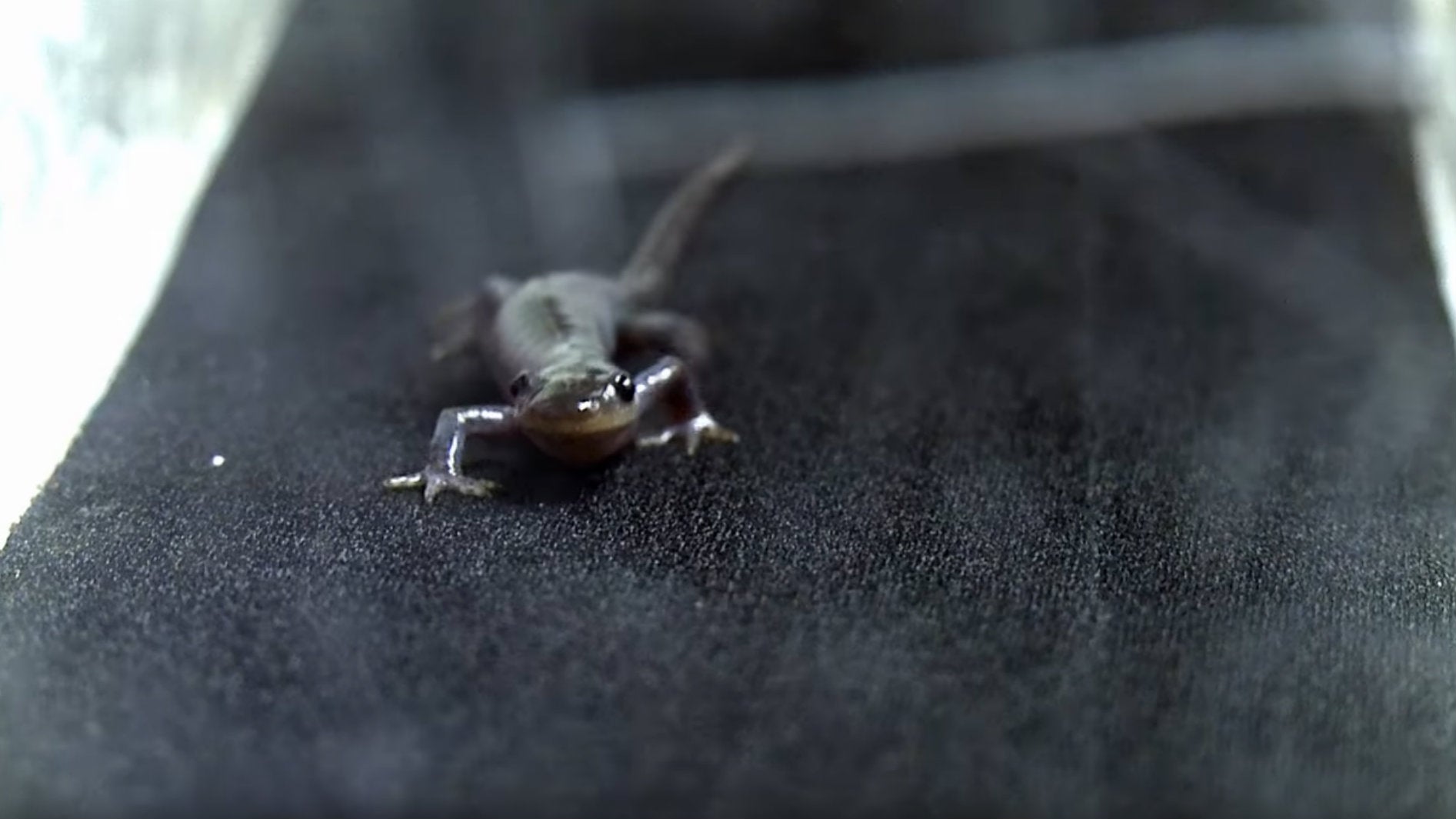This Valentines Day, pay your beloved the ultimate compliment: I want you like a salamander on a treadmill wants sex
How far would you go for love? Would you cross rivers and highways, risk death and dehydration, propelled onward only by desire and your short, stubbly little legs?


How far would you go for love? Would you cross rivers and highways, risk death and dehydration, propelled onward only by desire and your short, stubbly little legs?
On a day commemorating the complex mating rituals of the human species, take a moment to appreciate the example set by the Ambystoma genus of salamander. These tiny North American amphibians will walk up to nine miles in search of a mate, crossing inhospitable, predator-laced territory in the hopes of dispersing their genetic material into wetlands unknown.
The best part: Science found this out by putting the salamanders on tiny treadmills.
Ambystoma salamanders are sexual pioneers in more ways than one. The genus contains a population of all-female, (sort of) self-cloning salamanders that reproduce through sperm theft; researchers call this unique salamander lineage “unisexual.”
But that same population tires relatively quickly when it’s time to walk for sex. Sexual salamanders will walk twice as far as their unisexual counterparts to mate. The human equivalent of that exertion is human jogging for 75 miles without a break, says Robert D. Denton, a biology research fellow at the Ohio State University who published the findings.
“Perhaps the more interesting question is why the all-female salamanders don’t go very far, and we think that has to do with the physiological costs of not having sex,” Denton told the university’s news room in December. “Essentially, not mixing up your genomic material often enough likely causes some problems for genes that you need to make energy.”
You hear that? Stop swiping and get moving.